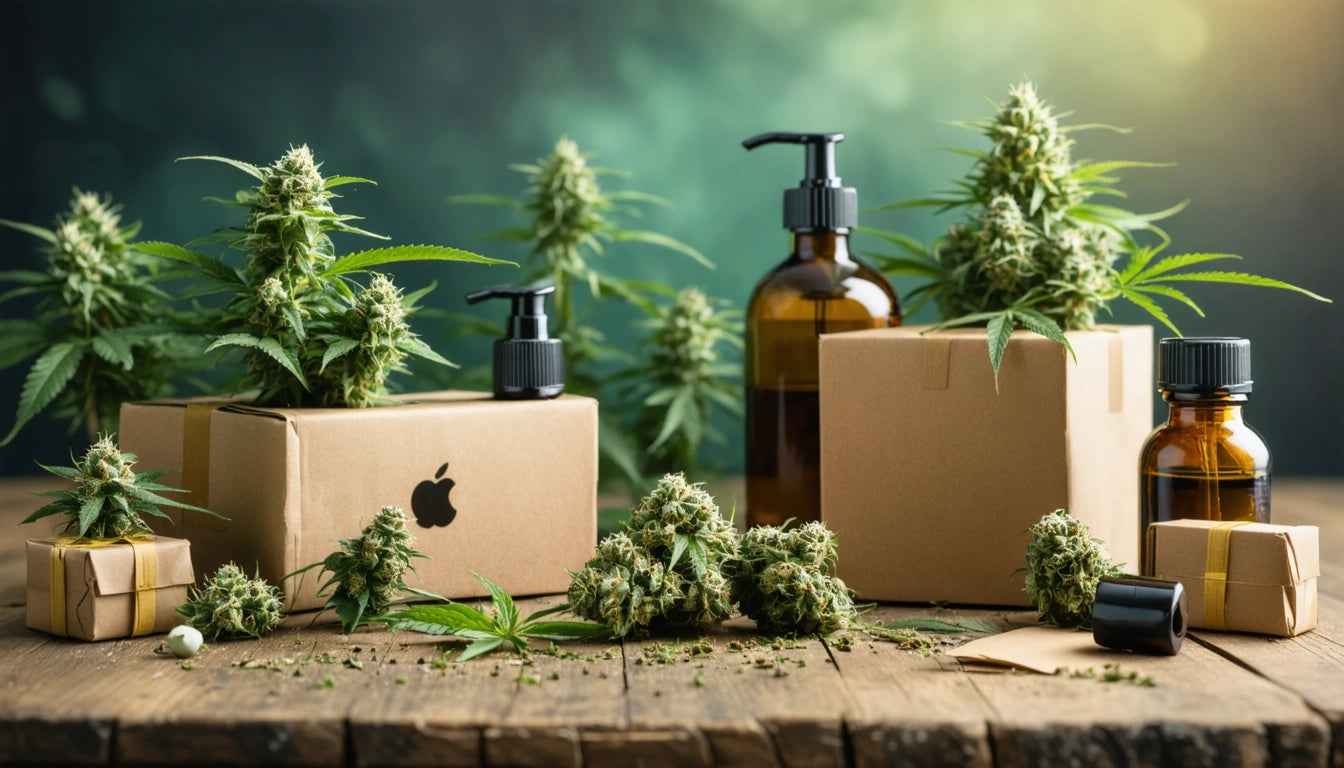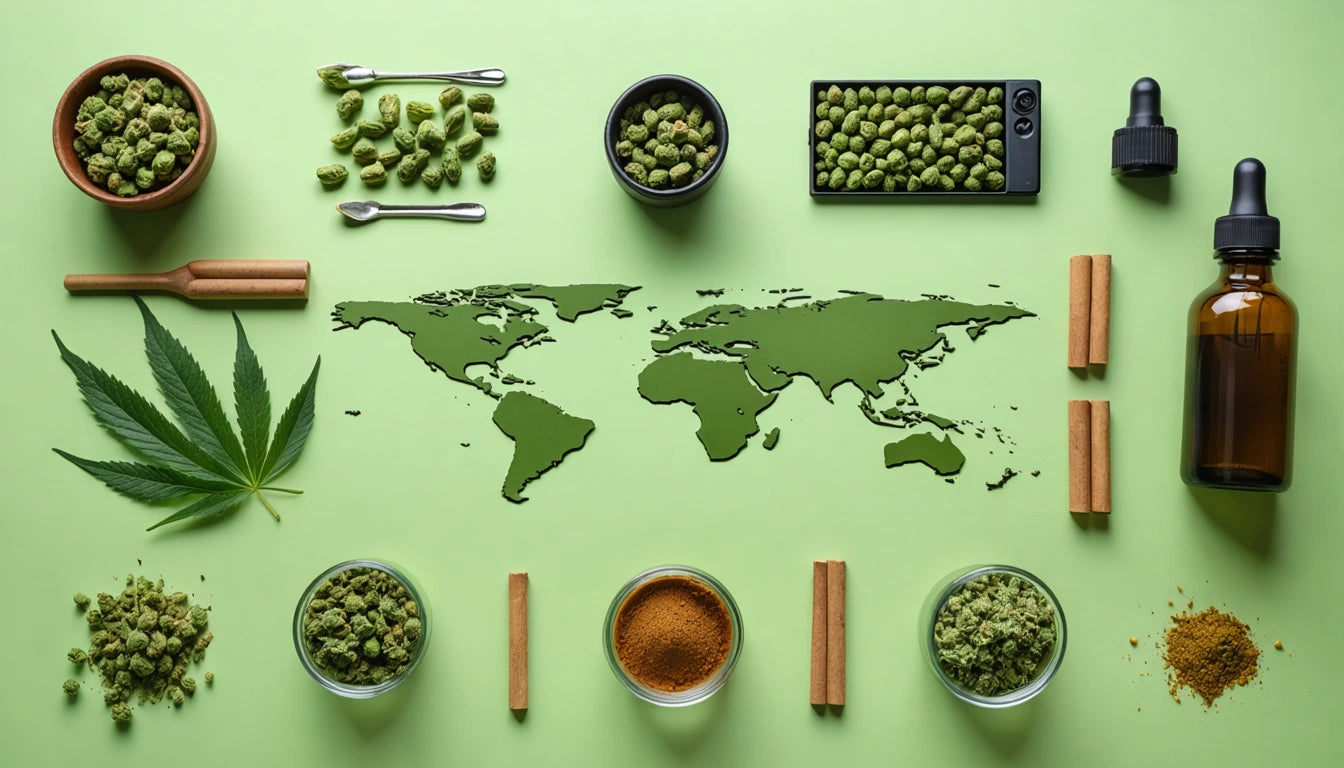Table of Contents
Feel the Difference: Tactile Trends in Luxury Packaging
In the competitive cannabis market, packaging has evolved beyond mere containment to become a critical touchpoint in the consumer experience. Luxury packaging that engages the sense of touch creates memorable brand interactions that influence purchasing decisions and foster brand loyalty. This sensory dimension adds perceived value that can justify premium pricing strategies.
The Sensory Marketing Power of Touch in Packaging
Touch is perhaps the most underutilized yet powerful sense in marketing. When consumers physically interact with packaging, they form immediate quality judgments that impact their perception of the product inside. According to research on texture in luxury packaging, tactile elements can increase perceived value by up to 70% compared to visually identical products in standard packaging.
The psychology behind this phenomenon is straightforward: our brains associate textural complexity and weight with quality and craftsmanship. This connection is so strong that consumers often report higher satisfaction with products packaged in tactile materials, even when the actual product remains unchanged.
Key Tactile Elements That Influence Consumer Perception
- Surface texture variations (smooth, rough, embossed)
- Material weight and density
- Temperature sensations (cool metal, warm wood)
- Structural rigidity and resistance
- Transitional elements (soft-touch coatings)
Premium Tactile Elements That Elevate Brand Perception
Several specific tactile treatments have become signatures of luxury packaging in the cannabis industry. Luxury packaging trends highlight techniques that create immediate sensory impact.
Embossing and Debossing
These complementary techniques create dimensional texture by either raising elements above the surface (embossing) or recessing them below (debossing). Both methods create shadow play and tactile interest that invite touch. For cannabis brands, subtle embossing of logos or pattern elements creates an understated luxury cue.
Soft-Touch Coatings
Velvety, matte finishes created through specialized coatings provide a sensory experience that contradicts visual expectations. This cognitive dissonance creates memorable packaging moments. These coatings are particularly effective for premium pre-roll and concentrate packaging where the unboxing ritual is central to the experience.
Material Innovation: Beyond Traditional Luxury
While traditional luxury relied on heavyweight papers and rigid structures, modern luxury packaging embraces sustainable materials with unique tactile properties. Texture and weight considerations have evolved to include innovative options.
Sustainable Textures
Recycled materials with visible fiber content, seed-embedded papers, and bioplastics with organic textures offer both environmental benefits and distinctive tactile experiences. These materials tell a story through touch, communicating brand values without explicit messaging.
Contrast and Juxtaposition
Combining contrasting textures creates dynamic packaging experiences. Smooth against rough, matte against gloss, or rigid against flexible elements create memorable sensory journeys. This approach is particularly effective for multi-component packaging systems where different elements serve distinct functional purposes.
Production Considerations for Tactile Packaging
Implementing tactile elements requires careful production planning. When working with specialized materials and finishes, packaging efficiency becomes crucial. Our automated filling systems and equipment help maintain production speeds while accommodating complex packaging designs with tactile elements.
Production considerations should include:
- Material compatibility with filling processes
- Durability of tactile elements during shipping and handling
- Consistency of texture across production runs
- Cost-effectiveness of specialized treatments at scale
For brands transitioning to more tactile packaging, phased implementation can help manage costs while testing market response. Starting with limited edition releases or flagship products allows for production optimization before full-scale deployment.
Balancing Minimalism and Texture
Modern luxury often embraces minimalist design principles while incorporating selective tactile elements. Minimal labels with tactile components create a sophisticated balance that communicates premium positioning without visual clutter.
Tactile Future Directions: Where Luxury Packaging Is Heading
The future of tactile packaging combines sensory appeal with technological innovation. Emerging luxury packaging trends point toward several developments that will shape the next generation of premium cannabis packaging.
Smart materials that change texture in response to temperature or touch provide interactive experiences that surprise and delight consumers. Microencapsulated scents activated by touch create multi-sensory packaging moments. Meanwhile, haptic printing technologies enable increasingly complex textural patterns at commercial scale.
For cannabis brands seeking competitive advantage, tactile packaging offers a powerful differentiation strategy. By engaging the sense of touch, brands create deeper connections with consumers that translate to brand loyalty and premium positioning in an increasingly crowded marketplace.
As regulations continue to limit other marketing channels, the package itself becomes an even more critical brand communication tool. Investing in tactile elements creates memorable brand experiences that consumers can literally feel the difference in, driving both initial purchase decisions and lasting brand impressions.











Leave a comment
All comments are moderated before being published.
This site is protected by hCaptcha and the hCaptcha Privacy Policy and Terms of Service apply.